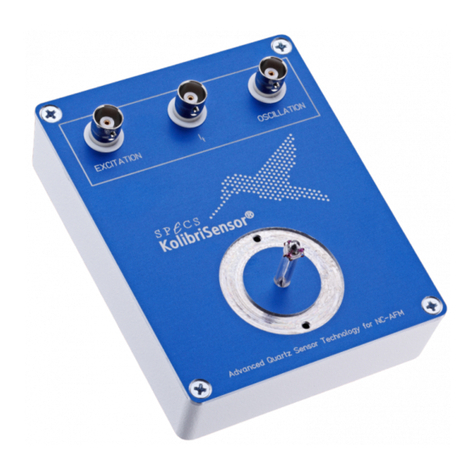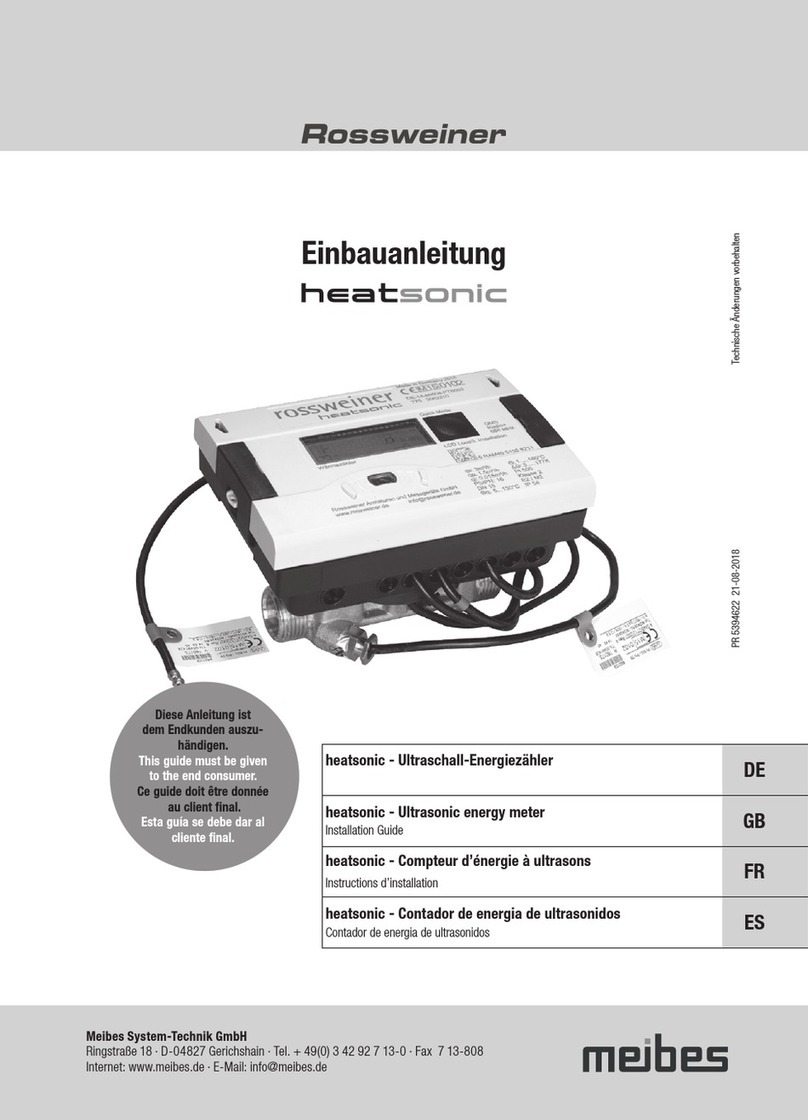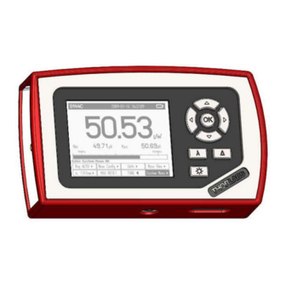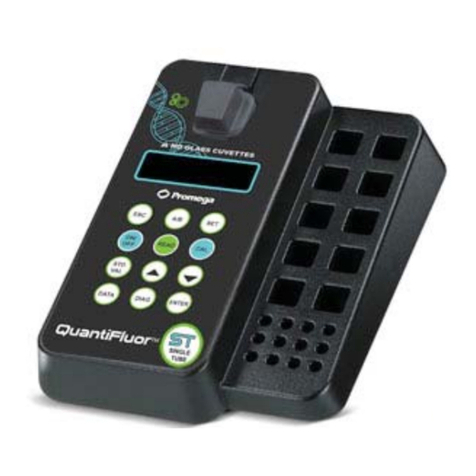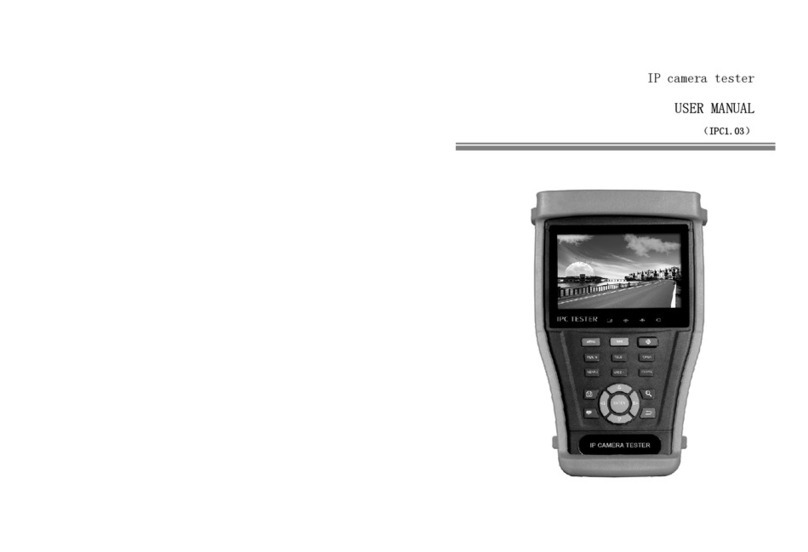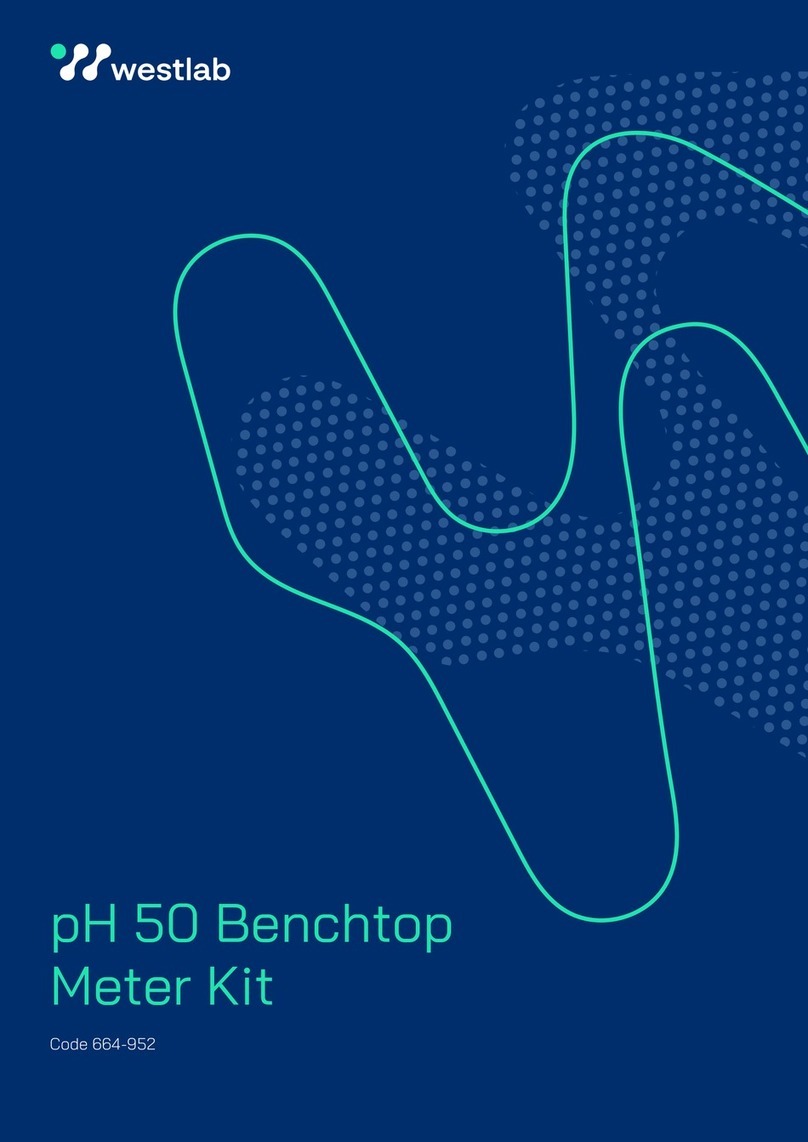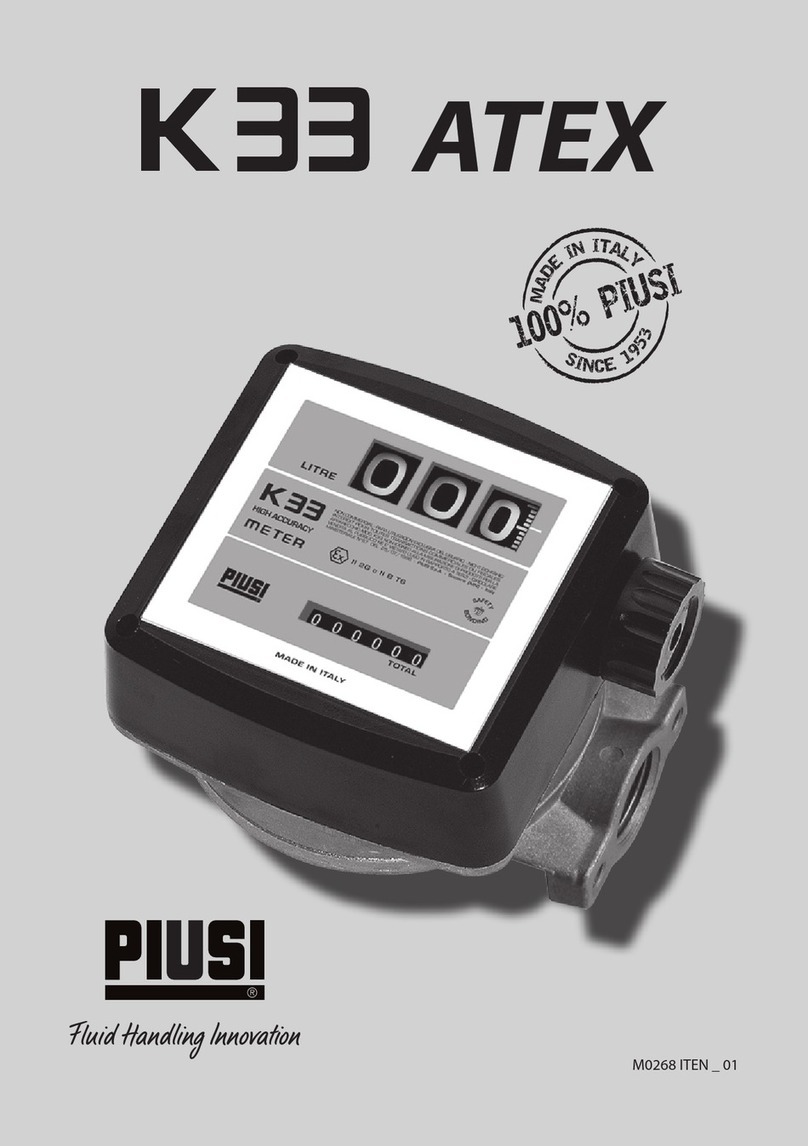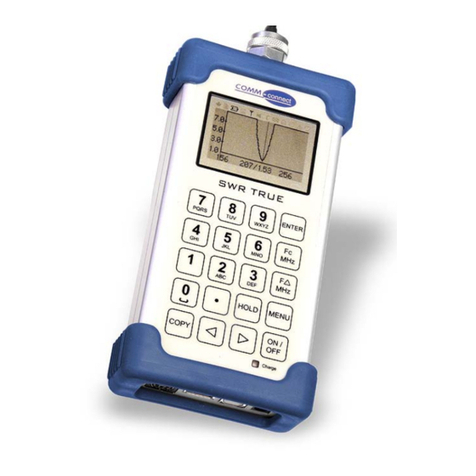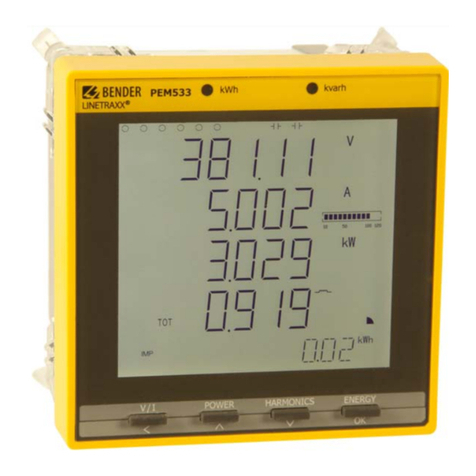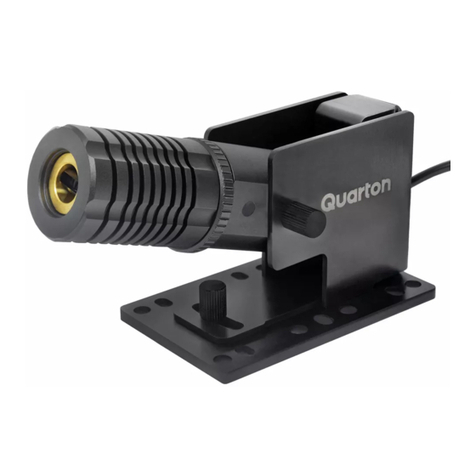SPECS PHOIBOS Series User manual

PHOIBOS
Hemispherical Energy
Analyzer Series
PHOIBOS 100 / PHOIBOS 150
3.1

All rights reserved. No part of this manual may be reproduced
without the prior permission of SPECS GmbH.
ser manual for the Hemispherical Energy Analyzer Series PHOIBOS 100/150.
Version 3.1 revised 19 November 2008.
SPECS order number for this manual: 78 000 101.
PHOIBOS
SPECS GmbH - S rface Analysis
and Comp ter Technology
Voltastrasse 5
13355 Berlin
GERMANY
PHONE:+49 (0)30 46 78 24 -0
FAX: +49(0)30 4 64 20 83
http://www.specs.de

Chapter
T Table of Contents
1 Introduction 1
1.1 Overview .....................................................................................1
2 Components and
Connections 5
2.1 System Description, Package Contents .....................................5
2.2 Electrical Connections ................................................................6
3 Spectrometer 11
3.1 The Lens System ........................................................................12
3.2 Hemispherical Analyzer (HSA) .................................................18
3.3 Magnetic Shielding ...................................................................20
3.3.1 Magnetic Coupling for -Metal Chambersμ ...........................................21
3.3.2 Trim Coil .................................................................................................21
3.4 Slit Orbit Mechanism ................................................................22
3.5 Single and Multichannel Detector (SCD) / (MCD) ...................25
3.5.1 Principles of Detection ..........................................................................25
3.5.2 Coherence of Epass and Step ................................................................26
3.5.3 Electron Multiplication ..........................................................................27
3.5.3.1 Extended CEM ..................................................................................29
3.5.3.2 Linearity of the CEM’s .....................................................................30
3.5.4 Conversion Energy .................................................................................32
3.5.5 Spectrometer Voltage 0 ......................................................................33
3.6 Work Function ..........................................................................34
4 Installation 37
4.1 npacking .................................................................................37
4.2 Mounting the Detector ............................................................37
4.3 Achieve the Maximum Lifetime of a Channel Electron Multi -
plier 39
PHOIBOS

Table of Contents
4.4 Alignment .................................................................................40
4.4.1 Analyzer Alignment ...............................................................................40
4.5 Vacuum Installation ..................................................................41
4.6 Baking Out ................................................................................43
4.7 Electronic nits Installation .....................................................44
4.8 SpecsLab Hardware and Software Installation .......................44
5 nit Operation 47
5.1 First Operation ..........................................................................47
5.2 Quick Start .................................................................................47
5.3 Detailed Operation ...................................................................48
5.3.1 Slit Setting ..............................................................................................48
5.3.2 Detector Operation ...............................................................................48
5.3.3 Functional Test .......................................................................................49
5.3.3.1 XPS (AES/ PS) Operation .................................................................49
5.3.3.2 ISS Operation ...................................................................................50
6 Troubleshooting 51
6.1 Short Circuits .............................................................................51
6.2 Possible Problems .....................................................................51
7 Calibration 57
7.1 Complete Calibration Procedure .............................................58
7.2 Recalibrate the DAC Precision .................................................59
7.3 MCD Calibration .......................................................................60
7.4 Work Function Calibration with PS ......................................61
7.5 Work Function Calibration with XPS .......................................62
7.6 Offset Calibration with PS .....................................................62
7.7 Gain Calibration with XPS ........................................................64
8 Analyzer Checks 65
8.1 Independence of Peak Position with Pass Energy ..................65
8.2 Energy Scale Tests with XPS .....................................................66
8.2.1 Check Kinetic Energy Scale ....................................................................66
8.2.2 Check Peak Position ...............................................................................66
8.3 Specification Check ...................................................................67
8.3.1 Survey Spectrum of Silver ......................................................................67
8.3.2 Intensity and Resolution ........................................................................68
8.4 Connection Check of the Analyzer Electrodes .......................70
8.4.1 Capacitance Check for Electrodes .........................................................71
8.4.2 Check the Cable Contacts ......................................................................71
8.5 Check all analyzer voltages ......................................................73
PHOIBOS

Table of Contents
9 Deflector Settings 75
9.1 Preamplifier ...............................................................................75
9.1.1 Discriminator ..........................................................................................75
9.1.2 Amplifier Check .....................................................................................76
9.2 Detector Voltage ......................................................................76
9.3 Noise ..........................................................................................77
9.3.1 Suppress a Noisy Channel ......................................................................77
9.3.2 Switch off Certain Channels ..................................................................77
9.3.2.1 Mask example for MCD9 .................................................................78
9.3.2.2 Mask example for MCD5 .................................................................79
10 Spare Parts 81
10.1 Cu Gasket ..................................................................................81
10.2 Multiplier ...................................................................................81
10.2.1 Channeltron Handling and Storage ......................................................81
10.2.1.1 Handling of the Multiplier ..............................................................81
10.2.1.2 Operation of the Multiplier ............................................................82
10.2.1.3 Storage of the Multiplier ................................................................82
10.2.2 Change a Channeltron ..........................................................................82
10.2.2.1 Removing the Detector Flange .......................................................82
10.2.2.2 Replacing Channeltrons ..................................................................82
10.2.2.3 Mounting the Detector Flange .......................................................83
PHOIBOS

Chapter
1Introd ction
1.1 Overview
Chapters in this manual:
The SPECS PHOIBOS hemispherical electrostatic energy analyzer allows recording of en-
ergy spectra for negative particles (electrons) and positive particles (ions) in the kinetic
energy range from 0 eV to 3.5 keV.
The PHOIBOS series of hemispherical analyzers are hemispherical deflectors available in
two sizes, 100mm or 150 mm mean radii. The input lens is designed to accommodate a
wide range of applications.
The analyzer can be equipped with single-channel and optional multichannel detectors;
a 5-channel detector for the PHOIBOS 100 and a 9-channel detector for the PHOIBOS
150. The detection electronics incorporates a discriminator, preamplifier, counter and
PHOIBOS 1

Introduction
bus interface. All parts are integrated into a single, compact RF-shielded aluminum
case. The detection electronics are supplied together with the analyzer control unit.
PHOIBOS analyzers provide the detection of electron and ion energies between 0 and
3500 eV with minimum step widths of 7 meV. For ultra high energy resolution applica-
tions the unit can be operated in a 400 V or a 40 V range with extremely low ripple.
Step widths down to 80μV are possible in the lowest voltage range.
A multi-element, two-stage transfer lens can be operated in several different modes for
angular and spatially resolved studies. All lens modes can be set electronically. A Slit-Or-
bit mechanism and a Multi-Mode Lens make the sampling area of the analyzer and the
acceptance angle area of the lens selectable. Thus the analyzer allows spatially resolved
measurements down to a diameter of 100 μm as well as large area investigations associ-
ated with different lens acceptance angles.
All units are completely controlled by SPECS software. Operation of the software will be
described in a separate manual.
Typical uses of the PHOIBOS analyzer include photoelectron spectroscopy (XPS, SSXPS,
PS), Auger electron spectroscopy (AES, SAM) and ion scattering spectroscopy (ISS). The
PHOIBOS analyzer is bakeable up to 200°C after removal of the detector electronics and
the connection for the lens supply.
2PHOIBOS

Overview
Safety Information
Before any electric or electronic operations please cons lt
“SPECS Safety Instr ctions” and follow them strictly.
Some adjustments that have to be performed in this manual are dangerous. At each
point these are indicated by a warning label:
Warning!
Tests to be performed on the electronic nit are with its cover removed. Hazardo s
voltages are present. Only trained, q alified personnel are allowed to perform this
task.
PHOIBOS 3

Chapter
2Components and
Connections
2.1 System Description, Package Contents
The contents of your system should include the components listed below. Please refer
to figure 1 for photos of these.
●PHOIBOS analyzer
The PHOIBOS analyzer consists of the following internal parts:
▪analyzer housing,
▪internal μ-metal shielding,
▪lens system,
▪hemispherical analyzer,
▪multichannel (MCD) or single detector (SCD)
▪Slit Orbit mechanism.
●HSA3500 power supply for PHOIBOS analyzer (fully remote controlled).
●and the following additional parts:
1. Mounting instructions
2. Manual Safety Instructions
3. Manual PHOIBOS
4. Manual SpecsLab2
5. Manual CasaXPS
6. Second network card (Fast Ethernet PCI Adaptor)
7. Detector electronics PC 300
8. Handle for power supply HSA3500
9. 2 x RS232 cables - CAN bus cable
10. Pair of DN100CF copper gaskets
11. Cross over cable 2m
12. Ethernet cable TP 2m
13. 2 x terminator plugs CAN bus
14. Power line cables
15. EC10 CAN-Ethernet-Adapter (section on page )
16. Magnet holder for EC10 Adapter
17. Vacuum interlock plug (shorten pin1-pin2)
18. HSA3500 cabinet feet
PHOIBOS 5

Components and Connections
19. Analyzer box with filter unit (cube or cylinder shape) , fixed cable
20. SHV-cable ChannelBase
21. SHV-cable ChannelHV
22. SpecsLab2 Installation CD
23. Specification (Test Report)
24. Pair of DN40CF copper gaskets
25. Pair of DN16CF copper gaskets
26. Two Lugs for analyzer lift
27. Two Lugs for analyzer support (only PHOIBOS 150
28. Screws for lens flange
(screws and nuts for PHOIBOS 100 and bolts and nuts for PHOIBOS 150)
Figure 1: Package Contents
2.2 Electrical Connections
The electrical connection diagram is shown in figure 2, page 7. The connection to the
analyzer and the detector are supplied by two multi-pin vacuum feedthroughs that are
designed for high voltages up to 5 kV. More detailed descriptions are given in section
and section 8.4 .
All devices must be switched off before connecting or removing cables.
6PHOIBOS

Components and Connections
Figure 5: Analyzer Main Components and Voltage Principle
0 main retardation voltage numerically equal to
- kinetic energy (Ekin) +pass energy (Ep) + workfunction (WF)
Channel HV / Base anode / cathode potential for the channeltrons
HV - Base detector voltage
ChannelBase - 0 conversion voltage
LA..LE lens potentials
IH, OH inner / outer hemisphere
T1 to T10: electrodes of the multi mode transfer lens
S1: hemispherical capacitor entrance slit
S2: hemispherical capacitor exit plane
IH: inner hemisphere
OH: outer hemisphere
ro: nominal capacitor radius (100 or 150 mm)
C1 to C9: discrete collection, single / multichannel detector
(1, 5 or 9 channels)
single channel detection (SCD), multi channel detection (MCD)
10 PHOIBOS

Chapter
3Spectrometer
The PHOIBOS spectrometer consists of a vacuum housing and four major internal com-
ponents, which are shown in figures 3 - 5. All the parts must be contained within an l-
tra High Vacuum ( HV) environment, as particles emitted from the sample surface can
collide with the gas molecules changing their energy and momentum.
The internal components are:
●input lens system for receiving charged particles;
●180° hemispherical analyzer (HSA) with 100 / 150 mm nominal radius for per-
forming spectroscopic energy measurements;
●detector assembly for single particle detection;
●Slit Orbit mechanism with an external rotary feedthrough.
●Iris aperture with an external rotary feedthrough
The excitation source is dependent upon the technique to be used, but is commonly x-
rays or other photons, electrons or ions. Before the particles pass into the hemispherical
analyzer, they first pass through an electron lens system and a slit. Both the electron
lens system and the slits sizes (entrance and exit) have an effect on the energy spread
detected by the analyzer.
The input lens system (Figure 5: Analyzer Main Components and Voltage Principle page
10) includes ten lens tubes. For undisturbed image quality, the input lens system is grid-
free. The lens stages define the analysis area and angular acceptance by imaging the
emitted particles onto the entrance slit of the analyzer. Particles passing through the
lenses are focused onto the input slit S1 and are retarded in the lens for subsequent en-
ergy analysis. In addition the lens stages define the acceptance angles and area for a
given magnification entrance slit (see table 2 on page 16).
The lens system may be operated in several different modes for angular and spatially
resolved studies to adapt the analyzer to different tasks. All lens modes can be set elec-
tronically.
For small spot analysis a lateral resolution down to 100 m is available using the Highμ
Magnification Mode and the special Iris aperture. In the various Magnification Modes,
PHOIBOS 11

Spectrometer
angle-resolving is accomplished with an Iris aperture in the diffraction plane of the lens
system. using the Iris the angular resolution can be continously adjusted while keeping
the acceptance area on the sample constant.
The transmission modes are optimized for high transmission at different spot sizes of
the source. The lateral resolution is worsened and the acceptance area normally not
defined by the lens.
In the angular dispersive modes, the emission angle distribution is imaged instead of
the real image. All lateral resolution is lost, but instead the emission angle information
is easily available. These modes are intended for PS band mapping, Fermi surface map-
ping or similar experiments.
In the hemispherical capacitor, the particles passing through the entrance slit S1 are fo-
cused onto the capacitor output plane S2. The radial position of the slit image in plane
S2 depends on the kinetic energy of the particles in the capacitor. Particles on the cent-
ral trajectory possess the nominal pass energy. They are focused to the central radial
position at the exit plane S2. Particles with higher kinetic energy are focused further
outside, and particles with lower energy are focused further inside in plane S2. This of-
fers the possibility of multichannel detection, with simultaneous recording of an energy
band around the nominal pass energy. Particles passing through the capacitor output
plane S2 are accelerated onto the detector system C. With the multichannel detector,
each channel is connected to a separate preamplifier mounted outside the vacuum. The
preamplifiers are read out by the Multi Channel Detector (MCD) counter interface of
the SPECS data acquisition software.
3.1 The Lens System
The multi-element, two-stage transfer lens was designed to yield ultimate transmission
and well-defined optical properties. It may be operated in several different modes for
angular and spatially resolved studies to adapt the analyzer to different tasks. All lens
modes can be set electronically.
A lens system with the variable Slit Orbit mechanism is necessary to
●image the sample plane on the HSA entrance plane
●define the analyzed sample area and the accepted solid angle on a sample,
●accelerate / decelerate the particles with the observed energy to the pass en-
ergy.
The standard working distance of 40 mm and the 44° conical shape of the front part of
the lens provide optimum access to the sample for all kinds of excitation sources. At the
lens stage, the particles emerging from the sample S are imaged onto the entrance slit
S1, with the sample being in the focal plane of the lens system, i.e. 40 mm in front of
the first lens electrode T1. Inside the lens stage the particles pass through an intermedi-
ate image before they are focused onto the input slit S1 of the hemispherical capacitor
(figure 5). At S1 the particles have been retarded by the energy difference between the
nominal particle kinetic energy Ekin and the nominal pass energy Epass.
12 PHOIBOS

The Lens System
If S1 has the dimension D1, then by theory the imaged area of the sample has the
dimension DS with
DS
=
D1
/
M
(1)
The magnification of the lens stage is selectable (see table 2 on page 16). The magnific-
ation is changed electrically by connecting appropriate voltages to the lens electrodes.
The voltages are a function of the spectrometer voltage 0 which is nominally equal to
Ekin - Epass + workfunction. Ekin is negative for electrons and positive for ions.
The PHOIBOS system can operate in a Fixed Retarding Ratio (FRR) or in a Fixed Analyzer
Transmission (FAT) mode. In FAT mode the applied voltage to the hemispheres is
defined by equation 3 on page 18. In the FRR mode, the pass energy is given by Epass =
Ekin /R, with the retardation ratio R.
The actual size of the analyzer sampling area DS is, in principle, given by equation 1.
However, due to spherical aberration of the input lens, the image in the plane of the
entrance slit is diffused. The degree of diffusion increases for a fixed magnification with
the input lens acceptance angle. This means that the observed area in the focal planes
of the input lens system is smeared out with increasing angle, resulting in larger
sampling dimensions than given by equation 1. Thus the lens acceptance angle is select-
able by the magnification modes, keeping the spherical aberration at a well known, ac-
ceptable value.
A second reason for confining lens acceptance angles are angle-resolved measurements,
e.g. in tilt experiments or angle resolved photoemission investigations. Confining the
lens acceptance angle is also essential in ISS, as the kinetic energy in ISS depends on the
scattering angle, and thus peak broadening or double peaks appear when the lens ac-
ceptance angles are too large.
Figure 6: High Point Transmission Mode
PHOIBOS 13

Spectrometer
Figure 7: Medium Area Mode
High Magnification is (see Figure 8: High Magnification Mode page 15) particularly suit-
able for spatially resolved studies. The image plane of the sample is in coincidence with
the entrance plane of the analyzer. The user can define the acceptance area of the ana-
lyzer with the entrance slit. As the trajectories of electrons emitted from the sample are
influenced by electrical fields around the sample, T1 has a fixed potential, which is set
to ground, after switching on the power supply. Due to lens aberrations, rays entering
the lens far away of the lens axis at larger angles could find a path to the analyzer en-
trance. With an Iris aperture these “bad rays” can be eliminated. Furthermore the Iris
Aperture can be used to continuously adjust the angular acceptance of the analyzer.
For small spot analysis a lateral resolution down to 100 μm is available using the High
Magnification Mode and the Iris aperture.
The magnification modes were optimized to allow very large acceptance angles for
high transmission from point sources (Point Transmission Modes). In these modes angu-
lar resolution is accomplished with the Iris aperture in the diffraction plane of the lens
system. sing thie Iris, the angular resolution can be continuously adjusted between ±1°
and ±9° while keeping the acceptance area on the sample constant. The rays close to
the lens axis (paraxial rays) are focused at the Gaussian focus. Rays entering the lens at
a larger angle are converged more strongly. The disc of minimum confusion is where
the envelope of emergent rays has its smallest diameter. Slight under-focusing of the
lens displaces the disk of least confusion to the image plane. Thereby a higher angular
acceptance is achieved but the spatial resolution is worsened. This makes the Point
Transmission Modes most suitable for AES, ISS and synchrotron studies. As with the
High Magnification Modes, the Iris Aperture can be used to continuously adjust the an-
gular acceptance.
14 PHOIBOS
This manual suits for next models
2
Table of contents
Other SPECS Measuring Instrument manuals
Popular Measuring Instrument manuals by other brands
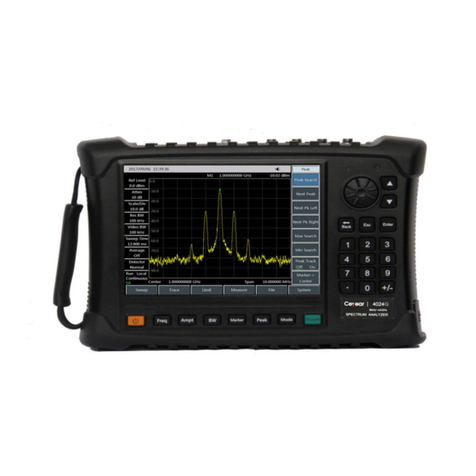
Ceyear
Ceyear 4024 Series Maintenance manual
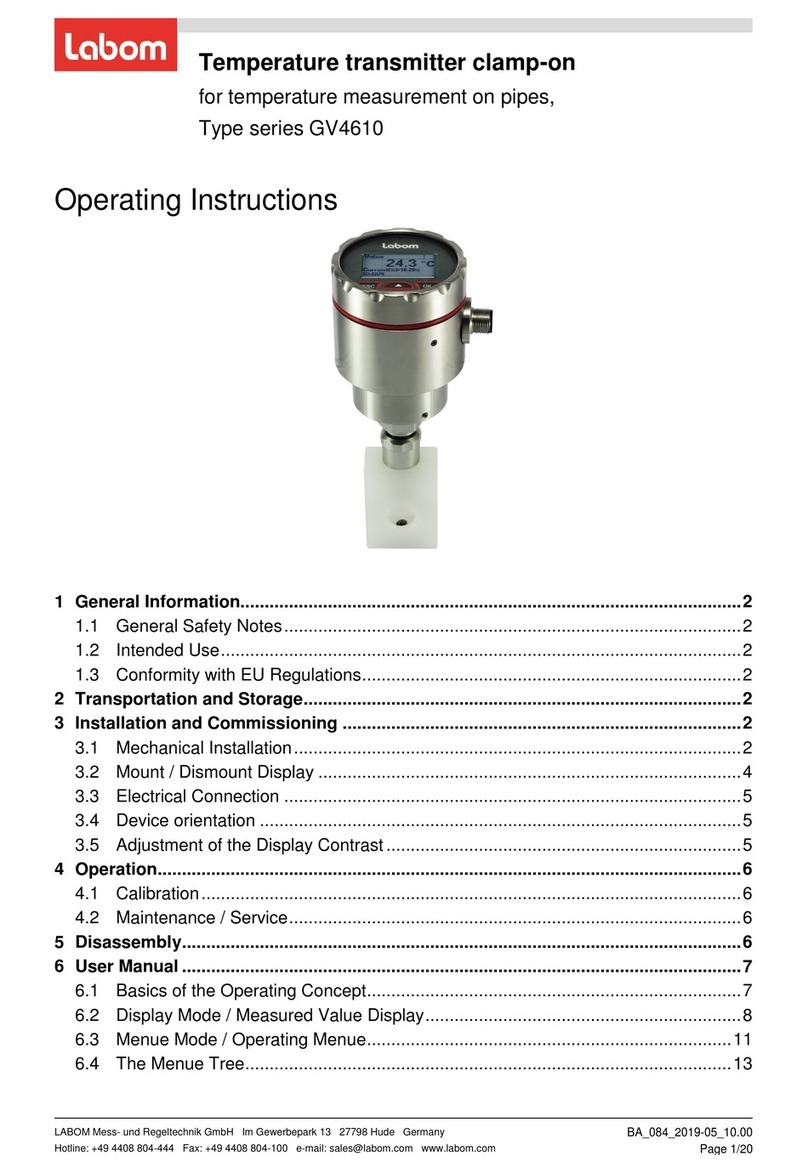
Labom
Labom GV4610 Series operating instructions
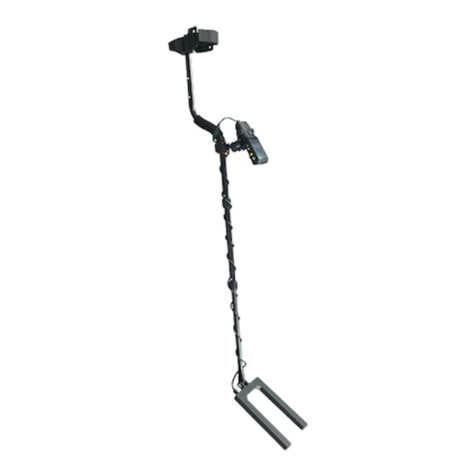
2nd Sight BioScience
2nd Sight BioScience InstaCaliper user manual
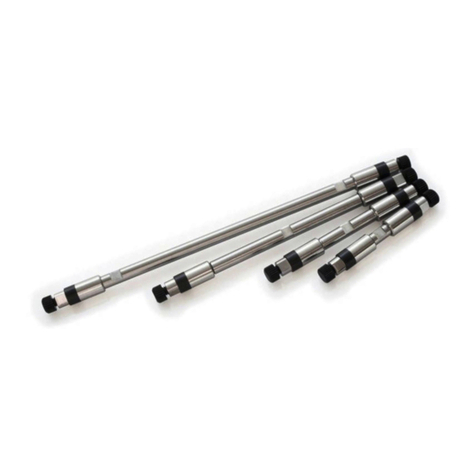
Shodex
Shodex Sugar SZ5532 Operation manual
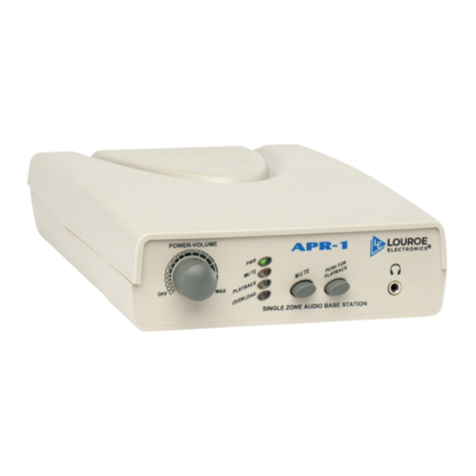
Louroe Electronics
Louroe Electronics ASK-4 101E Installation and operating instructions
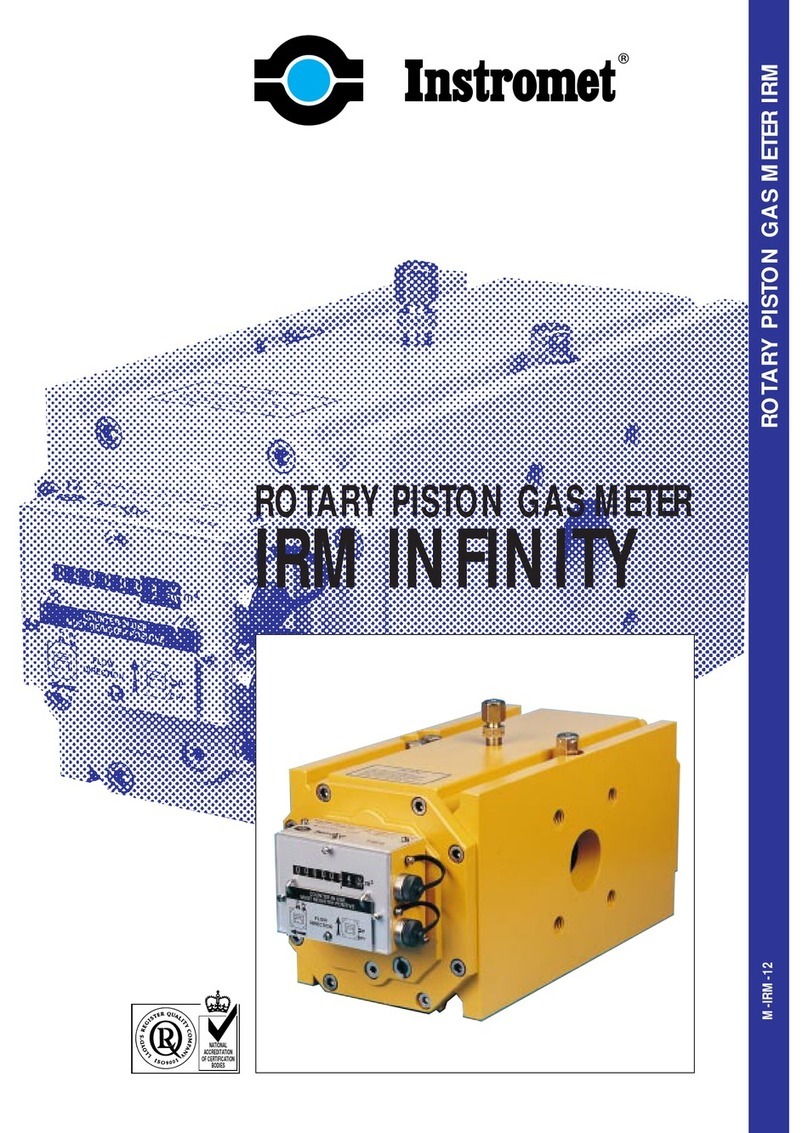
Instromet
Instromet IRM INFINITY manual





